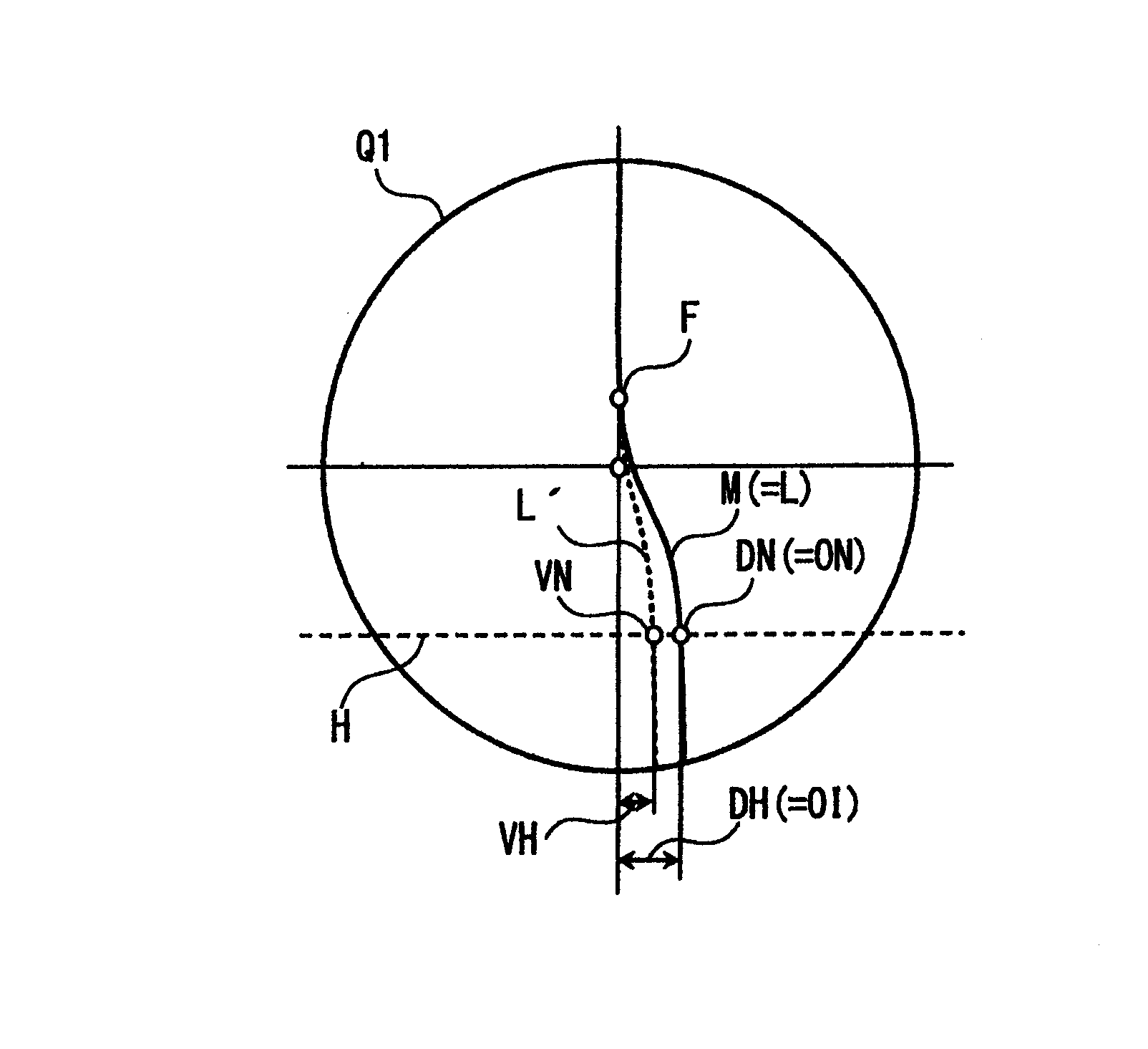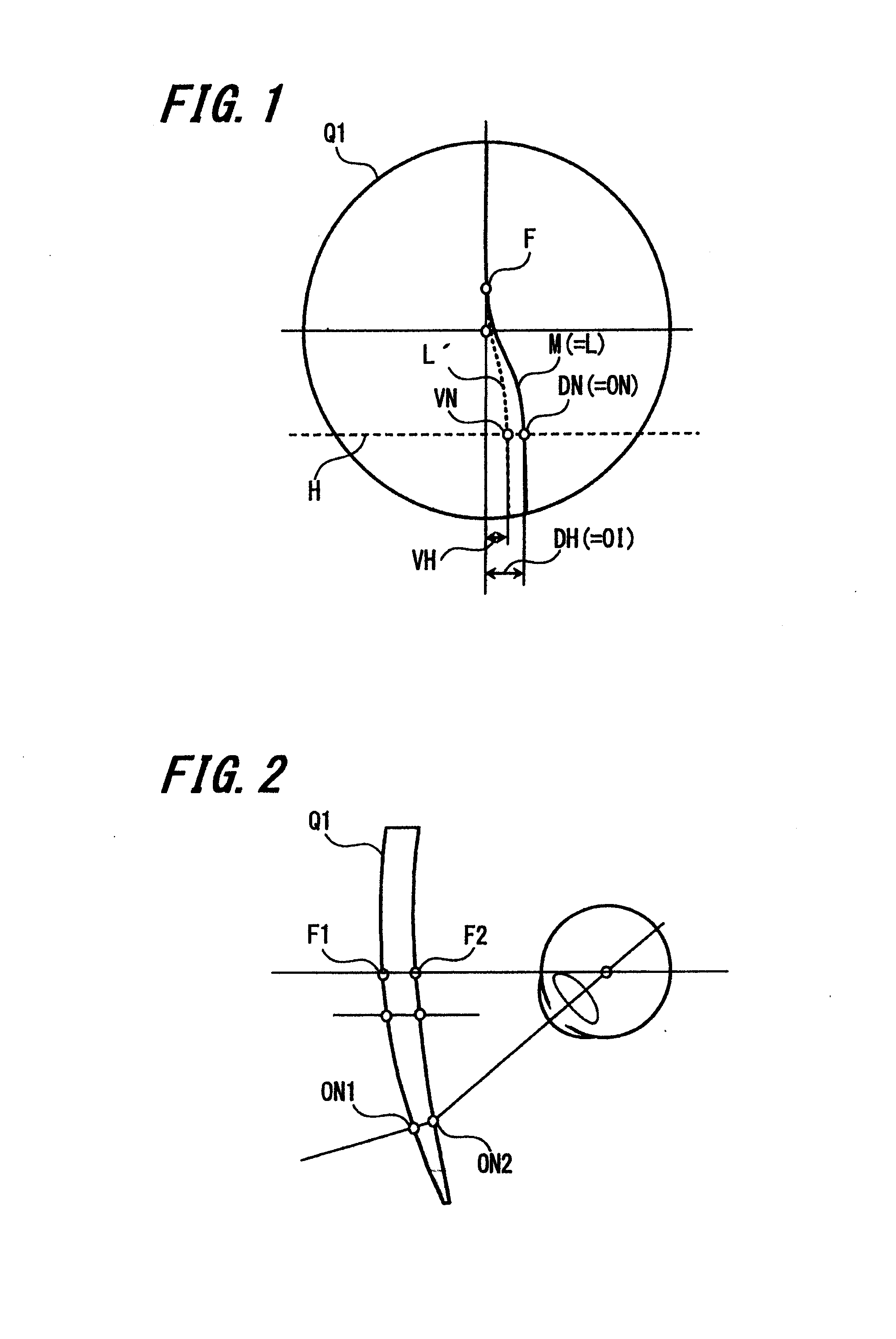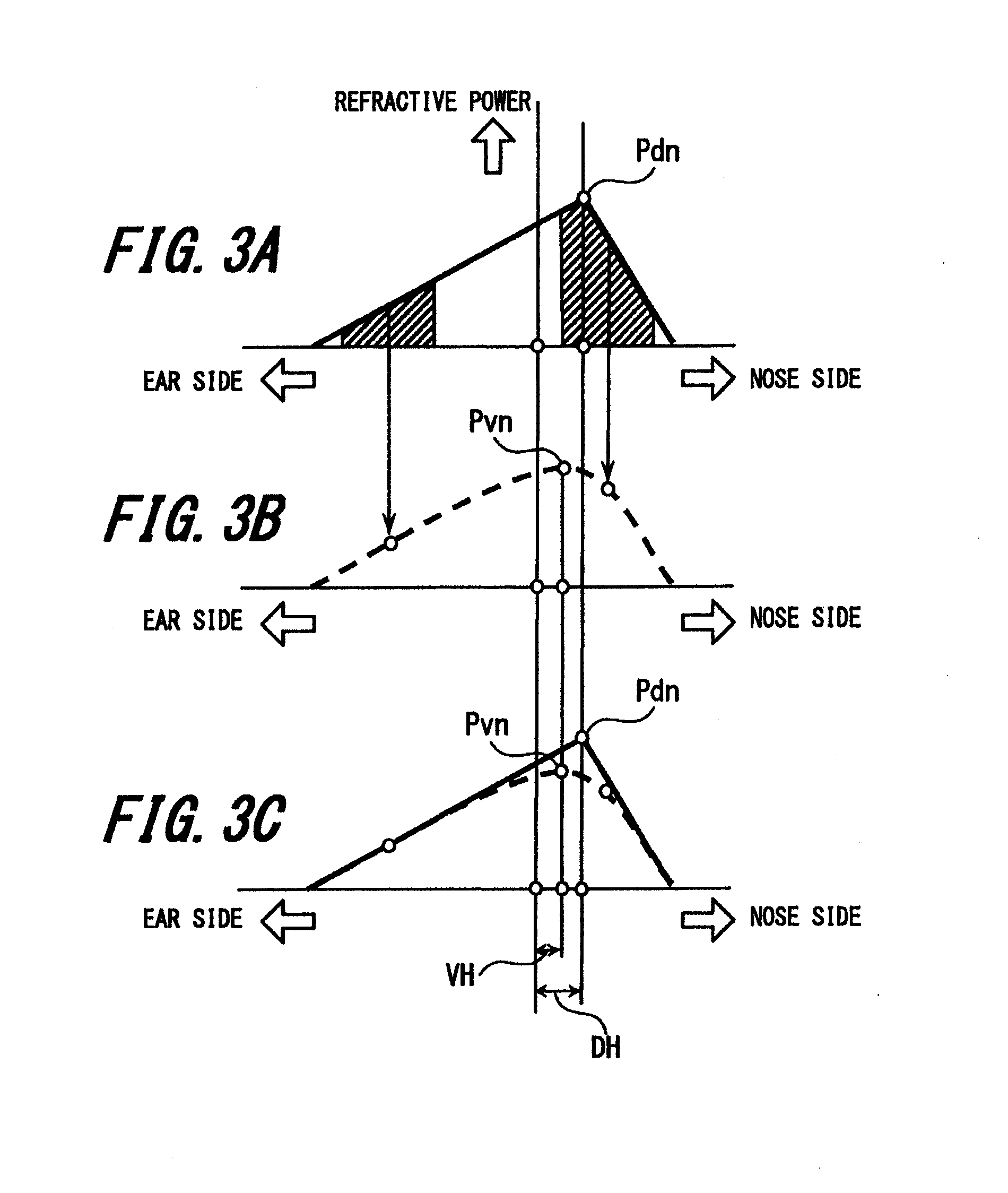Progressive power lens, method of designing progressive power lens and method of evaluating progressive power lens
a technology of progressive power lens and lens body, applied in the field of progressive power lens, can solve the problems of wearer distortion or sway of images, and it is difficult to design progressive power lens, and achieve the effect of less likely to impede binocular vision
- Summary
- Abstract
- Description
- Claims
- Application Information
AI Technical Summary
Benefits of technology
Problems solved by technology
Method used
Image
Examples
embodiment
[2] Embodiment of Evaluation Method for Progressive Addition Lens
[0104]Next, an embodiment of evaluation method for progressive addition lens according to the present invention will be described below. The evaluation of the optical characteristics (such as power, refractive power distribution state, layout position and the like) of the progressive addition lens is performed after the lens is designed and then trial-produced according to the design. To be specific, as the flow of a typical production process of the progressive addition lens, the lens is designed first. In the designing step, when determining the arrangement of the design principal meridian curve, the amount of inward movement is determined and laid out on the lens.
[0105]Further, while the processing is transferred from the designing step to the production step, there is a trial production step in which it is necessary to verify whether or not the production of the lens is performed according to the design. The verifi...
PUM
 Login to View More
Login to View More Abstract
Description
Claims
Application Information
 Login to View More
Login to View More - R&D
- Intellectual Property
- Life Sciences
- Materials
- Tech Scout
- Unparalleled Data Quality
- Higher Quality Content
- 60% Fewer Hallucinations
Browse by: Latest US Patents, China's latest patents, Technical Efficacy Thesaurus, Application Domain, Technology Topic, Popular Technical Reports.
© 2025 PatSnap. All rights reserved.Legal|Privacy policy|Modern Slavery Act Transparency Statement|Sitemap|About US| Contact US: help@patsnap.com



